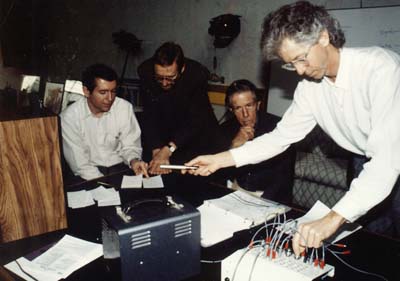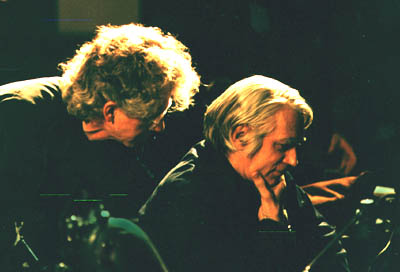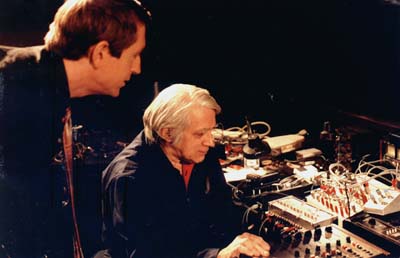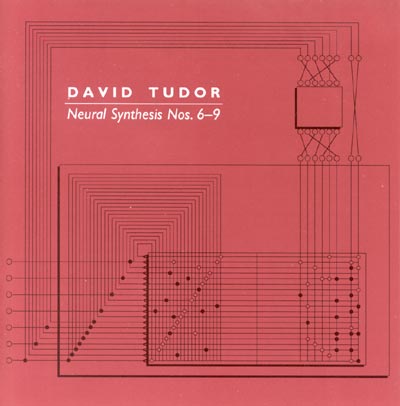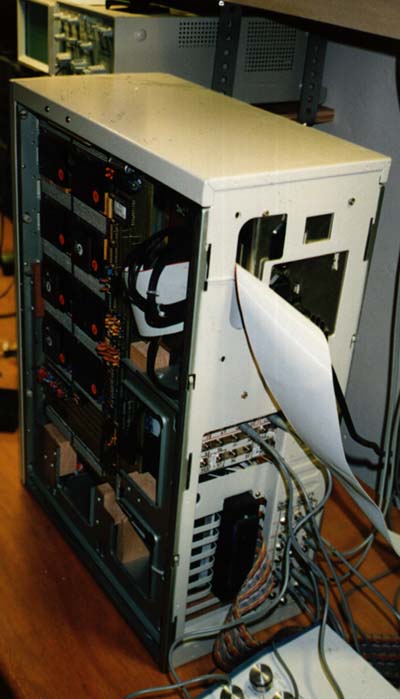Hardware DevelopmentWarthman Associates has developed two audio synthesizers, called Box #1 and Box #2, based on an Intel neural-network chip. The chip was developed by Mark Holler's group at Intel. Warthman Associates wrote technical documentation about this chip for Intel (see the 80170NX Electrically Trainable Neural Network Data Sheet and the 80170NX Neural Network Solutions Brochure). Forrest Warthman (Warthman Associates), Mark Holler (Intel), and Mark Thorson (Warthman Associates) developed the first neural-network audio synthesizer in their spare time. The synthesizer is described in a February, 1993, Dr. Dobbs Journal article written by Forrest, Mark, and Mark. Later, Mark Holler and Forrest developed a second synthesizer. The photo below, taken at Warthman Associates' office in 1992, shows our Box #1 synthesizer during a demonstration. The people in the photo, left to right, are Mark Holler (Intel), Fred Waldhauer (AT&T Bell Labs), John Cage (Merce Cunningham Dance Company), and Forrest Warthman.
Box #1 had its world premier concert at the old Paris Opera House, November, 1992, in the Merce Cunningham Dance Company's world premier of Enter, with choreography by Merce Cunningham and music by David Tudor, the dance company's musical director. The program cover for that performance is shown below. The two photos below shows Forrest Warthman and David Tudor (top) and Mark Holler and David Tudor (bottom) with our Box #1 synthesizer in the orchestra pit at the City Center Theater, New York, 1993. Our synthesizer is on the right side of the bottom photo, with the red-plugged cables.
David Tudor used Box #1 to record a 1994 CD, a sample of which can be heard on Neural Synthesis Numbers 6-9, available from Lovely Music. Forrest's cover art for the CD is shown below. See also the text of his introduction to the CD.
The photo below shows Box #2, our second neural-network synthesizer, during development at Forrest's office in Palo Alto, The box uses multiple analog neural-network chips developed by Mark's group at Intel (and visible on the left side of the chassis). Control is exercised through an analog control panel (bottom-right corner of photo), patch-cable connectors on the rear of the chassis, and a real-time weight-setting program running on a host computer. For more details about Box #2, see Mark Holler's web page.
|





